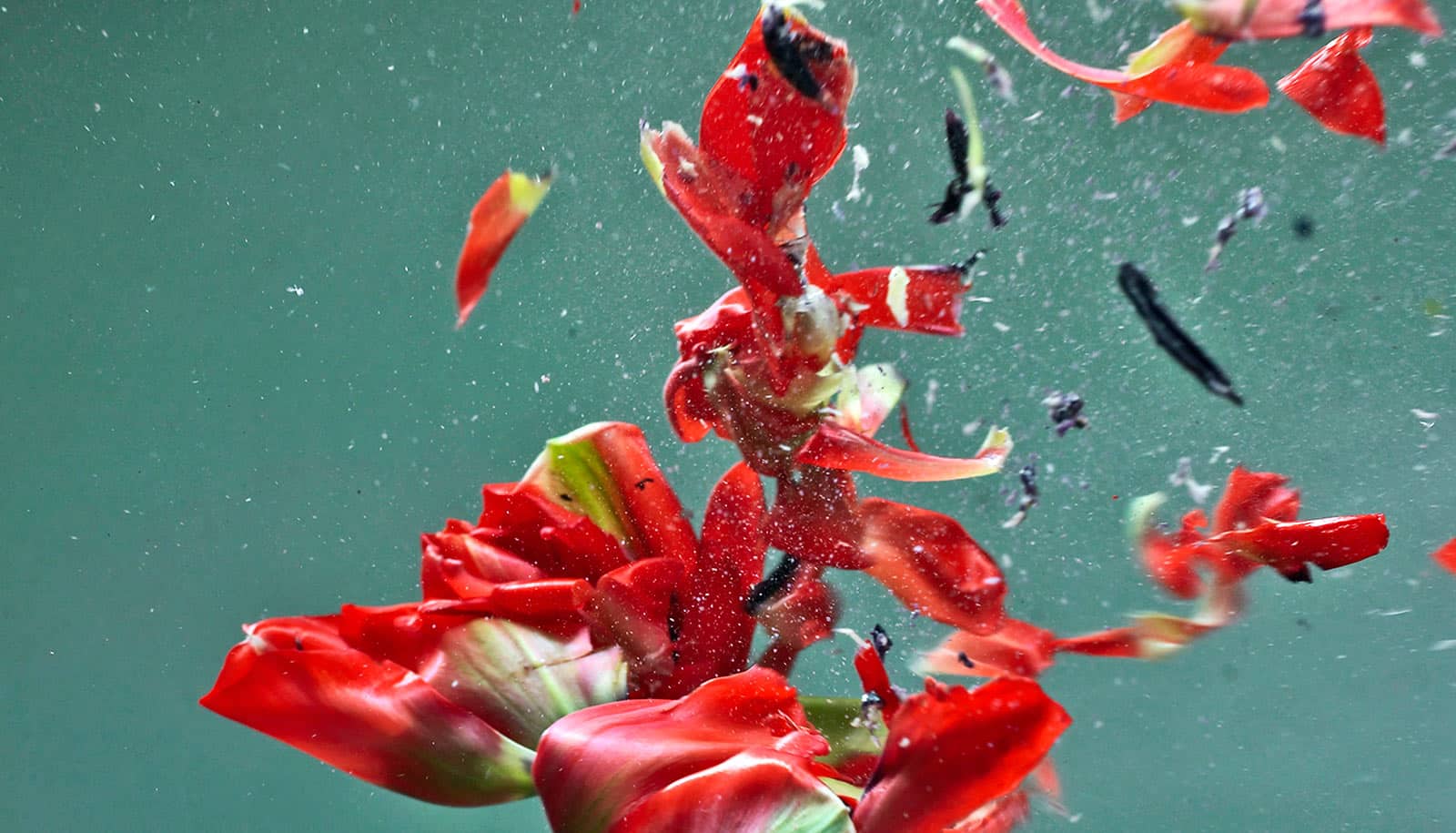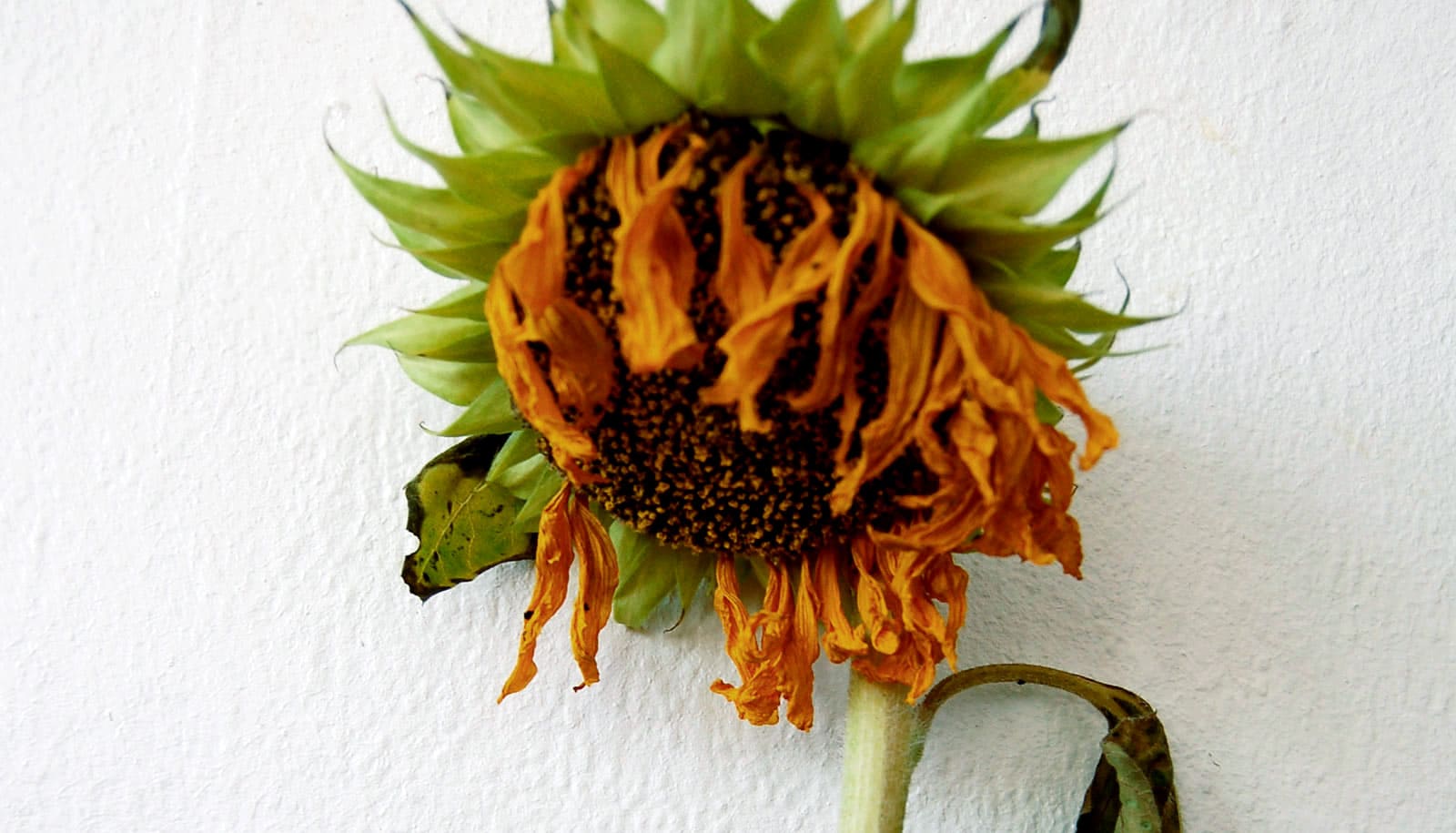New research offers clues about how plant cells respond to rain-induced swelling.
After a dry spell, a rainy day can feel rejuvenating. But for plants, a downpour can mean trouble. Faced with water suddenly rushing into its tissues, a plant must control its cells’ volume or risk them exploding.
The key is that cells weren’t dying a normal kind of death, they were undergoing programmed cell death.”
“The plant’s response to cell swelling has been studied for a long time and a lot is known about the signaling events. However, the sensor that detects cell swelling in the first place was not known,” says Liz Haswell, a professor of biology at Washington University in St. Louis.
The discovery provides insight into how plants sense and respond to mechanical signals, such as cell swelling, rather than chemicals signals, such as nutrients or growth factors.
Plants balancing pressure
Plant cells are armed with a strong yet flexible outer cell wall that holds back the force of water pushing out from inside the cell. Lacking a skeleton, plants only have the force of water and cellulose to keep them upright. Without that force, they go limp. But as the pressure pushing out—turgor pressure—becomes too great, the cell swells and an imbalance occurs.
Researchers have documented that cell swelling leads to a release of calcium into the cell cytoplasm and a buildup of reactive oxygen species, unstable molecules containing oxygen that can lead to cell death. As the cell responds to the swelling, specific genes get turned on or off.
But the player that senses cell swelling has been missing.
Sandwiched between the outer cell wall and the internal contents of the cell is the plasma membrane. Embedded in the plasma membrane are mechanosensitive ion channels or tunnels that release ions in a response to membrane stretch. Mechanosensitive ion channel 10 (MSL10) is one member of the family of mechanosensitive ion channels that is a focus of the Haswell lab.
Debarati Basu, a postdoctoral research scholar in the Haswell lab, applied a chemical that would cause the cell wall to lose its strength and become soft. At the same time, she could increase the turgor pressure inside the cell and study the role of MSL10 in the initial steps involved in the cell swelling response.
Plant cells, carrying a mutation that made MSL10 overly active, responded to cell swelling similarly to wildtype plants—they released calcium, making reactive oxygen species, and chaning gene expression. However, the response was more pronounced and missing when the plant cells lacked MSL10.
The researchers discovered that MSL10 is not only an ion transporter but also a primary responder to cell swelling.
“MSL10 is an ion channel, so it’s tempting to think that it itself is transporting calcium. That may not be true,” explains Basu. “Our results propose the possibility that MSL10 senses the cell swelling and activates a different channel that then transports the calcium.”
Triggering self-destruct
As the cell swelled, the cell wall failed to maintain the force of the turgor pressure. But it did not explode. Instead, the cell died. But only plants with functional MSL10 died. In plants lacking MSL10, death was avoided.
“This might seem counterintuitive,” Haswell says. “Why is MSL10 required for cells to die—you’d expect it to save cells’ lives during swelling, not the other way around. The key is that cells weren’t dying a normal kind of death, they were undergoing programmed cell death.”
Basu found that MSL10 activates programmed cell death—a regulatory mechanism that originates from inside of the cell. Cell damage itself did not cause death; MSL10 triggered a program of cell suicide.
Why the plant triggers cell suicide in response to cell swelling is still a mystery. But Basu and Haswell have some intriguing hypotheses.
“The plasma membrane has probably been damaged. So maybe the plant wants to recoup some of that material and incorporate it back into the plant through this regulated process,” Basu offered.
Or perhaps these damaged cells are more susceptible to infection, and the plant commits cell suicide as a way to save the plant at the sacrifice of a few cells.
“We already know that when a pathogen infects a plant, the plant will kill off a bunch of the cells that are infected to prevent the spread of the infection,” Haswell says. “This idea of cell suicide in response to mechanical stimuli is intriguing.”
The research appears in Current Biology.



